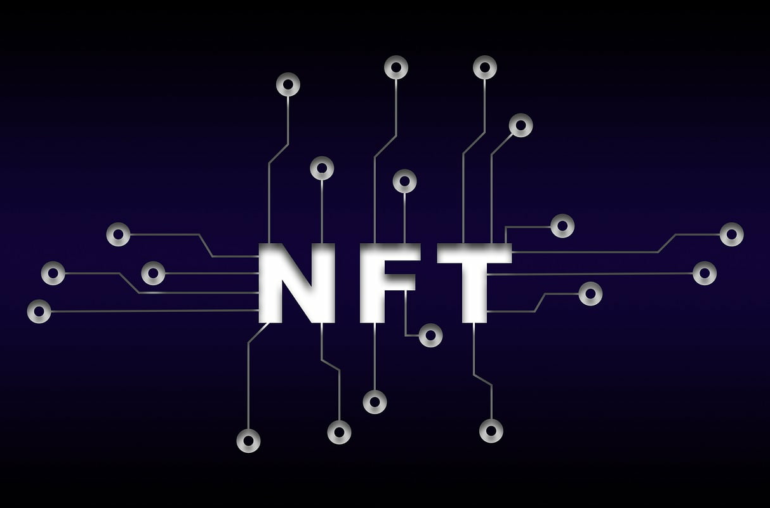Loading…
For those who can’t quite get their arms around the future economy, non-fungible tokens (NFTs), Bitcoin and Ethereum are mysteries. But there’s nothing mysterious about a market cap for Bitcoin exceeding $468.69 billion yesterday, (down from $883.44 billion on the same day last year) and Ethereum at $231.27 billion (down from 38% from the same day last year).
Dogecoin, made popular by Tesla entrepreneur Elon Musk, who poked fun at the concept by being unable to explain it on television program Saturday Night Live, doesn’t even break the top 10 of digital currencies. It sits at number 11 with a market cap of $9 billion, according to bankrate.com.
Paying for NFTs, a finite number of unique digital images created by artists and celebrities, with digital currencies often conjures another three-letter abbreviation which starts with the letter N.
Even with the current difficulty in explaining these new, Blockchain-connected commodities, markets are still determining the value of a digital currency in a way that’s not much different than determining the worth of $1 on currency markets or an ounce of gold: through a socially agreed upon value — what someone is willing to pay.
The fungiblity of a good means that it can be replaced by an identical item — it is not original, explained Michael Johnston, founder and president of HJC New Media in Toronto. “For example, you can trade a dollar for four quarters and you will have exactly the same amount. Non-fungible simply means, more or less, that something is unique and cannot be replaced by another similar thing,” he said. An NFT is exactly that, but in this instance, it is built upon Ethereum Blockchain.
What isn’t a mystery is the more than $200,000 that an NFT event raised for CARE USA. And, organizational leaders didn’t initially know about the event. Digital artist Jack Butcher was troubled by the need in Afghanistan. He created a small piece of digital art and sold it for the digital currency Ethereum.
On Aug. 17, 2021, the NFT’s initial offering date, one Ethereum was worth roughly $3,006 when converted to U.S. dollars. The NFTs were sold for 0.03 Ether or 10 at a time for 0.28 ETH. Sale proceeds totaled 59.54 ETH (roughly $208,879), according to data from CARE USA.
“Jack Butcher decided to put together with the NFT proceeds going to the CARE emergency response, the Care Package for Afghanistan,” explained Alejandra Villalobos, associate vice president, major gifts, for CARE USA. “CARE started accepting crypto in 2020, perhaps a little later in the game, but very enthusiastically,” she said.
To get into the NFT game, an organization needs a digital wallet or a processor, which in the case of CARE USA is The Giving Block. “The biggest thing is nonprofit (managers) tend to think it is more complicated than it is,” said Alex Wilson, co-founder of digital currency processor The Giving Block. All of the crypto is converted in U.S. dollars, he explained. The Giving Block also works with Save The Children, No Kid Hungry, Team Rubicon and Wake Forest University.
Wilson explained that NFT creators benefit in a way that artists in the past have not. Historically, artists have only made a profit off the original sale of their creation. NFTs on the other hand, allow artists to attach royalties to their creations and profit each time their creation is sold.
Socially conscious artists see the value of their creations as a way to support a cause. Forums that partner with The Giving Block, such as DoinGud, give them the opportunity to contribute to a mission with a minimum of 5% of every sale going to a social impact organization of their choice.
CARE USA does not hold on to crypto currencies, immediately converting Ethereum or whichever digital currency is donated, to U.S. dollars, said Villalobos. Some nonprofits do hold digital currencies as an investment, in hopes the value will increase.
Sankar Krishnan, executive vice president of Capgemini, urges nonprofit financial managers to not exceed between 2% and 5% of assets. You should accept digital currencies but convert them to a currency regulated by a monetary authority, such as the U.S. Federal Reserve. For example, a Bitcoin was trading at $48,515 at this writing in mid-December, down from its all-time high of $68,990 and a 52-week low of $21,263.
Not many nonprofits are yet in the NFT space but it is growing. CARE USA is high on the leaderboard of nonprofit NFTs with its $208,879. “The Blazed Cat” project for Mental Health America raised $302,865 and another $70,648 was raised for the organization through the Blank Face NFT. The Woodies NFT raised $225,960 for Tree For the Future. The Women and Weapons NFT raised $104,019 for the Malala Fund. More data can be found here … https://bit.ly/3mbvIv1
And, it’s a long way from the sale of a Cryptokitty for $69 million or Twitter founder Jack Dorsey selling the first ever tweet for the equivalent of $2.9 million.
Well-known brands are often quick to jump on new trends and ideas, according to Wilson. By working with a well-known corporate partner to host a charity auction, NFT artists can raise large sums of money for causes. Wilson gave as an example Coca-Cola partnering with 3D artists at Tafi to auction special-edition NFT “loot boxes,” resulting in $575,883.61 donated to the Special Olympics (https://bit.ly/3dXEokd).
Leveraging NFTs as auction and donation pieces offers two potential possibilities, according to Johnston. The first is that you can leverage large donations or auctions of specifically curated pieces made by known artists The second is developing a steady stream donation with smaller, select pieces that focus on emerging artists. “Both options offer income into the organization through the sale of legitimately owned media pieces,” he explained.
While $208,879 is a rounding error to CARE USA, which reported just short of $609 million in revenue on its recent federal Form 990, dollars do add up. A majority of the NFT participants were new donors to CARE USA, according to Villalobos. The artist, who is also founder of Visualize Value (visualizevalue.com) reached out to his community of followers and they responded, creating another opportunity for CARE USA.
As we celebrate our 36th year, NPT remains dedicated to supplying breaking news, in-depth reporting, and special issue coverage to help nonprofit executives run their organizations more effectively.
Read our latest news on any of these social networks!
Don’t miss the latest updates on the world of nonprofits!
Previous post
Polling: Social Giving Gets Slight Uptick
Next post
Quiz App Woos Potential Gen Z, Millennial Donors
Don’t miss the latest updates on the world of nonprofits!
As we celebrate our 34th year, NPT remains dedicated to supplying breaking news, in-depth reporting, and special issue coverage to help nonprofit executives run their organizations more effectively.
© NPT Publishing Group. Privacy Policy


